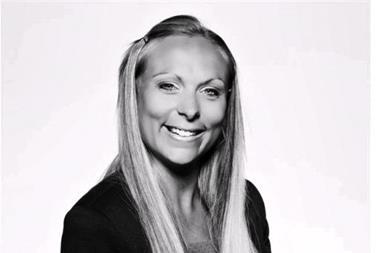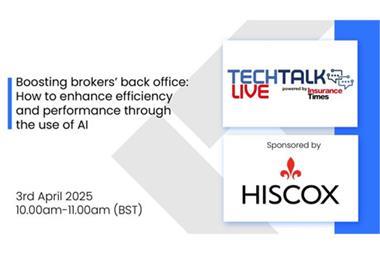Andy Baldwin says there will be some tough decisions ahead as changing economic conditions hit profitability.
Most insurers will be feeling the impact of the credit crunch in one form or another. Whether it’s tightening belts, freezing recruitment or conducting clear cost benefit analysis, tough decisions are being made across the industry to ensure businesses can weather the storm.
Against a backdrop of the credit crunch and continuing market uncertainty, 114 UK plc businesses gave profit warnings in the first quarter of 2008 – the highest since 2001 and an 11% increase on the same period last year.
The last time UK plc issued more than 100 profit warnings consecutively was in 2001 when the end of the dot.com boom led to painful economic readjustment. Despite the Bank of England decision to further lower the interest rate to promote market liquidity and help restore consumer confidence, where does this leave the insurance industry?
So far, the industry’s profitability appears to be relatively unscathed by the credit crunch with comparatively few profit warnings from the major players this quarter. Only five UK listed businesses issued profit warnings in the first quarter this year. Outside the UK, the industry has felt the impact of the credit crunch more significantly – but again the impact has largely been confined to bond insurers.
The impact is likely to become more widespread with the gradual emergence of directors’ and officers’ related claims impacting the London market. However, reporting thus far suggests we are not looking at a systemic problem.
The challenge for the general insurance industry will be far greater if the credit crunch transitions into a broader UK economic slowdown and US recession, which sadly looks increasingly likely.
Against this backdrop there appears to be a real risk that the general insurance sector will experience a continued deterioration of trading conditions leading to significant challenges in maintaining profitability levels and forecasts.
The general toughening of the business environment with rising inflation and capital market volatility will likely encourage a prolonging of the soft cycle conditions. Despite examples of selective rate hardening, overall it looks unlikely that there will be a major shift in market sentiment until 2009. This presents a further challenge in driving any significant shift in top line growth.
Another major challenge for insurer profitability is the redistribution of profit across the industry value chain. The relative power of the distributor – be it a bancassurer, affinity provider, or commercial lines broker – has increased significantly.
In commercial lines, we have seen the inexorable upwards trend in commission levels and profit share driven by broker consolidation, managed general agents (MGA) and panel rationalisation.
In personal lines, the emergence of the aggregators has had two impacts. First, the creation of a new distribution channel; and second, perhaps most importantly, it has allowed customers to rapidly determine a target premium for themselves.
“The new distribution entrants are tending to focus on the aggregator model or establishment of a specialist MGA rather than the traditional broker model.
Andy Baldwin
So how will the industry respond to a challenging trading environment?
We expect to see continued consolidation in the broker marketplace in both personal lines and commercial lines. The new distribution entrants are tending to focus on the aggregator model or establishment of a specialist MGA rather than the traditional broker model.
For established businesses, we will see tighter control on expense management and review and tightening of insurer panel arrangements to maximise income from insurers.
With the larger volume bancassurance or affinity arrangements, we will see more interest in greater risk retention or even to full underwriting models depending on the line of business.
In commercial lines, it will be the smaller more nimble regional or specialist brokers that continue to flourish.
To compensate for the loss of specific commission arrangements, global and national brokers will need to review and revamp client service propositions and business models.
From challenges around growing the top line to increasing commission levels and loss ratios beginning to deteriorate through rising claims costs, management attention will inevitably focus on the expense line as the balancing item.
But the scale of the distribution shift we are seeing in commercial lines, coupled with the growth of customers’ internet use for education, quotations and transactions, means that insurers are taking a more strategic review of their model, rather than adopting traditional cost cutting.
Insurers need to start with their customer and distributor needs, and then align staff and infrastructure around them. It is perhaps the insurers which face the greatest challenge. Many accept that the current position is untenable. However, the exam question is whether the dramatic shifts we have seen in distribution and profit redistribution are temporary or permanent.
All insurers are working through the business and financial implications of this, but ultimately those who will receive the A grades from shareholders will be those who can execute most rapidly.
Andy Baldwin is Ernst & Young’s head of insurance.





































